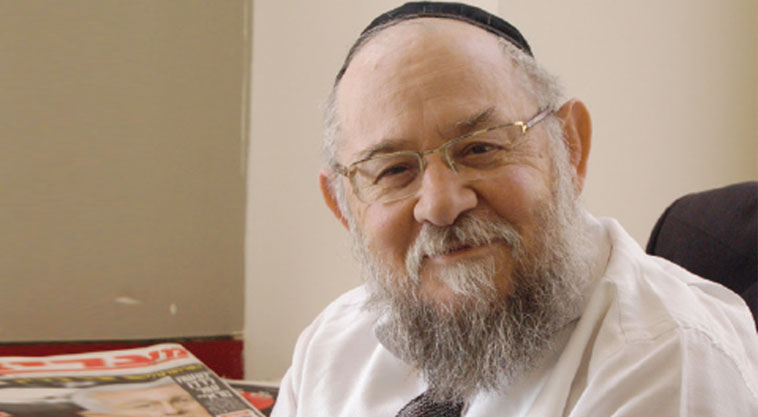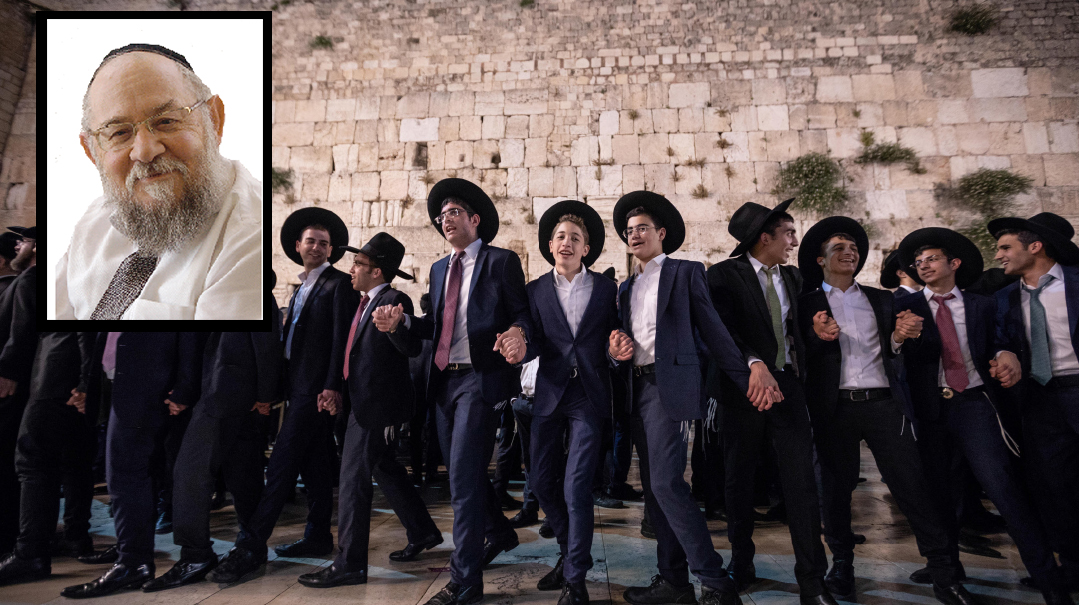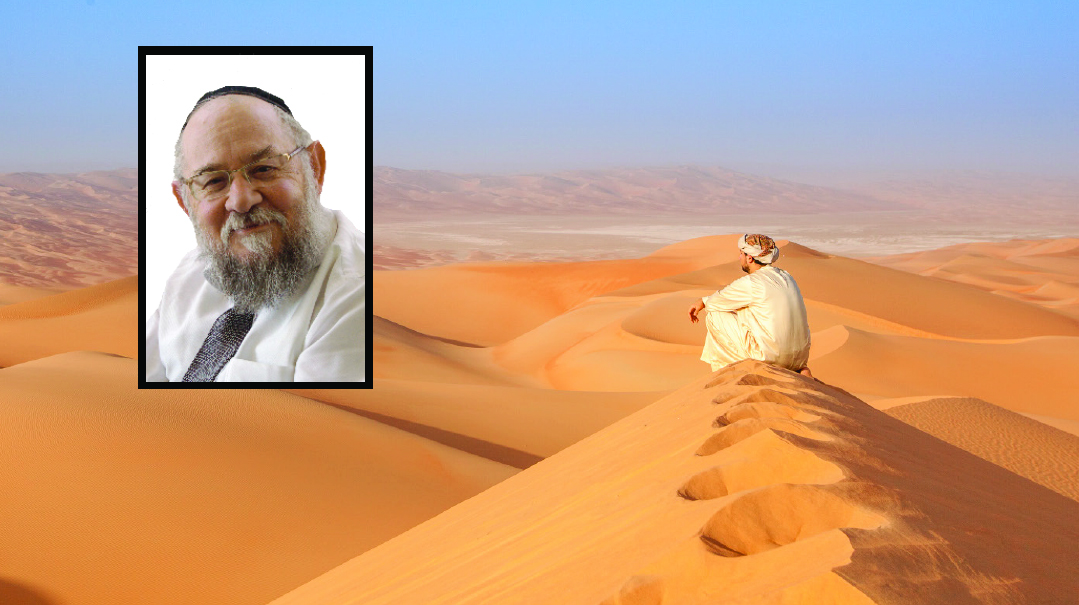Off the Cliff


T wo goats similar in every way. One chosen for slaughter and the other? Well it looks like he’s getting a reprieve — until he winds up literally going over the edge. Is there a message here for our own inner worlds?
When the Beis Hamikdash stood the Yom Kippur “goat ritual” was performed and although we only recall it in the Torah reading of this holy day to modern sensibilities it seems incredible that on Yom Kippur of all days the Jewish People should be occupied with such a ceremony.
The pesukim in Vayikra regarding the avodah of Yom Kippur tell us:
“And he shall take the two goats and he shall stand them before Hashem at the entrance to the Tent of Meeting. And Aharon shall place lots upon the two goats one lot for Hashem and one lot for Azazel. And Aharon shall sacrifice the goat upon which the lot for Hashem came up and he shall make of it a sin offering. And the goat upon which the lot for Azazel came up will stand living before Hashem to atone for it to send to Azazel to the wilderness.” (16:7-10)
At the entrance to the Ohel Moed two goats were placed. Two goats that looked similar in every way. The Gemara (Yoma 62) tells us that they were required to be “alike in appearance size value and time of selection.”
The Kohein would then draw lots and the lots too were required to be alike: “What is learned from the word ‘lots’? That they should be equal that one should not be of gold and one of silver or one large and one small.”
Evidently this complete resemblance was essential. It was only the lot cast by the Kohein Gadol that would differentiate between them deciding which of these identical twins would be a korban to Hashem and which would be cast out; which of them would be brought upon the Altar and its blood brought by the Kohein Gadol within the Paroches to the Kodesh Hakodoshim (which he entered only on Yom Kippur) and which of them would be led to the wilderness to Azazel.
What exactly is Azazel? In modern Hebrew the word is frequently used by frustrated individuals to tell someone where they can go. But what is the true underlying meaning? According to the Mishnah (Yoma 6:2) Azazel seems to be a place the final destination of one of the goats: “[The Kohein] comes up to the goat that is to be cast away places his two hands upon it and confesses.” (A detailed description of the confession follows.)
Afterward: “They handed it over to the one who would lead it away” (i.e. — a man appointed before Yom Kippur was ready to take the goat out to the wilderness after the lots had been drawn).
“The most eminent men of Jerusalem would accompany him to the first booth.” (Booths were erected along the way and men would be seated in them from before Yom Kippur to act as escorts.) “Ten booths from Jerusalem to the precipice… and they would escort him from one booth to the next except for the last one for they would not go with him to the precipice.
“What would he do? He would divide a strip of zehoris.” (The Kohein Gadol had tied a strip of red wool between the goat’s horns; the man in charge of the goat would now split this strip of wool into two.) “Half he would tie to a rock and half he would tie between the horns; then he would push it over behind him and it would roll down and before it was halfway down the mountain it would be broken to pieces.”
So according to the Mishnah Azazel is the name of the precipice from which the goat was pushed to its death.
THIS IN A NUTSHELL is the Torah’s description of the scapegoat sacrifice the focal point of the avodah of Yom Kippur. Odd no that this holy day which we assume should be spent entirely on introspection and making resolutions for moral improvement and for better relations with G-d should place this mysterious sacrifice front and center?
What is the deeper meaning to the ritual and what did the Israelite who came to witness it in the courtyard of the Temple see in it?
What did he see? He saw himself! In the separation of the two goats he saw a reflection of his own two-sided self and the image of his conflicted personality was held up for him to behold.
He knew that like a goat he too was given strong powers of resistance. He too is invested with the obduracy and boldness that enable a goat to resist the wishes of strangers while obeying his master absolutely. (The Hebrew word for “goat ” eiz is derived from az meaning “bold.”)
When the Jew came to the Temple courtyard on Yom Kippur he would see the two goats standing at the entrance.
Two goats similar in every way. But there at the threshold of the Beis Hamikdash at the place where a man’s deeds must squarely confront the highest values the gap between the two creatures is revealed. One will go to Hashem and the other — his peer — to the abyss of Azazel.
Those two goats struggle in every human heart. Rav Samson Raphael Hirsch wrote “It is in our hands to use our power of resistance with Hashem’s sanction and under His authority. It is in our hands to be like the seir l’Hashem the goat sacrificed on the altar to oppose the internal and external goads that push us to rebel. Or it is in our hands to be like the seir l’Azazel the goat cast from the precipice; that is to use the power of resistance within us to brazenly refuse to heed Hashem’s word.”
In other words the two goats tell a Jew that he stands at a moral crossroads with every deed he does. In every instance he is free to choose his path. He is at liberty to decide how he will utilize the power of restraint and opposition he was given against whom he will revolt and for whom he will take a stand. For until the lot was cast the goats were identical — there was nothing to compel them to choose one direction or the other. While in the case of the goats it was the Kohein who cast the lots man’s choice depends on his own free will. Witnessing the ceremony of the two goats no man could ever argue regarding any moral failing “What could I do? I was pushed by an uncontrollable urge to act as I did. That’s just the way I am.”
He had a choice. And the decision at that crossroads is fateful.
The goat chosen by lot for Hashem is slaughtered. It dies under the sharp knife of the Kohein Gadol yet this fate grants him entry into the Holy Temple. He is elevated. His blood is brought into the holiest of places the Kodesh Hakodoshim.
When the onlooker is faced with a clash between a desire to follow his yetzer and the moral value of a Torah prohibition yet acts against the desire at that moment he is bringing a little bit of his yetzer hara as a sacrifice. Yet through this death he like the goat enters a new level of life. His inner being takes a step upward. His soul is refined. The Temple gates are opened before him and he is brought to the Holy of Holies.
That is one possible path.
And then there is the other goat untouched by the Kohein’s knife. He stays alive. How well he represents the person who is never willing to yield an iota of its materialistic drives for the sake of a pure moral value. Such a person never retreats from egotism from the drive for honor and domination from the rot of envy and the impurity of hatred. He stays alive and he’s quite happy with himself. Surely he pities the other poor fellow who just got slaughtered. But that’s not him — he hasn’t sacrificed one bit of his material well-being for some moral value. And that is why he doesn’t cross the threshold of the Beis Hamikdash. Taken far enough his path leads him outside the realm of human habitation. It’s a path of no return — to Azazel. To an inevitable crash into the abyss.
To the whole Jewish nation gemar chasimah tovah. (Originally featured in Mishpacha Issue 679)
Oops! We could not locate your form.




